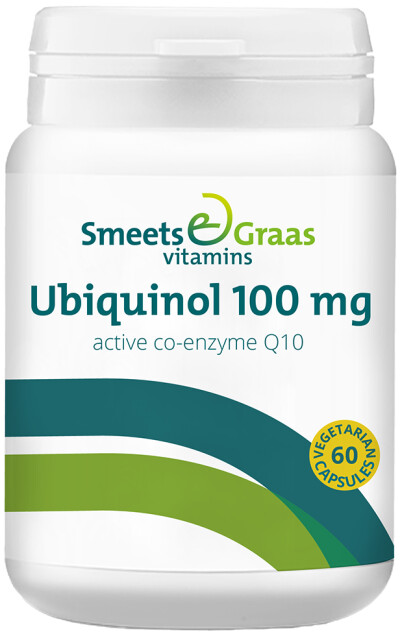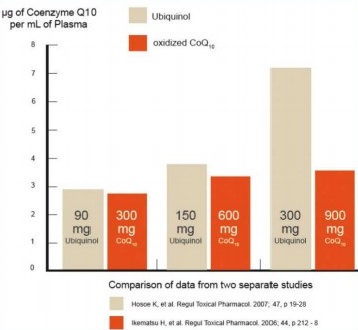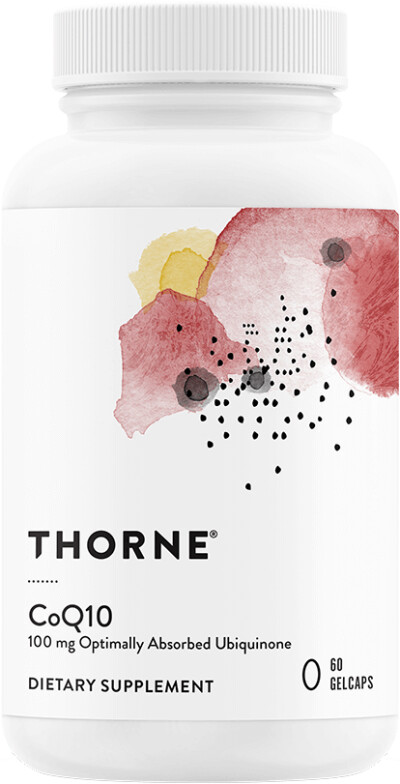21 Best Co-Enzyme Q10 Supplements

- Contains 100 mg ubiquinol per softgel
- Best value for money

- 100 mg coenzyme Q10 per softgel
- Nearly 3x better absorption than Ubiquinol

- 100% active form
- Contains 100 mg per capsule

- 100% active form
- Contains 300 mg ubiquinol per softgel

- 100% active form
- 200 mg per capsule

- Contains 100 mg per capsule
- Best absorbable form (proliposomal)

- 600 mg coenzyme Q10 per softgel
- Contains Q10 from Kaneka®

- Formula for libido and brain
- With 200 mg PrimaVie® Shilajit and 200 mg Kaneka QH® Ubiquinol

- 900 mg EPA and 360 mg DHA per daily dose
- 60 mg coQ10 per daily dose

- Formula for heart and blood vessels
- With 900 mg taurine per daily dose

- Contains monacolins
- Without additives and fillers

- Contains 200 mg ubiquinol per softgel
- Stable, patented shape (KanekaQH®)

- Contains 100 mg ubiquinol per softgel
- Suitable for vegetarians and vegans

- Contains 50 mg ubiquinol per softgel
- Developed and produced by Kaneka

- 200 mg coenzyme Q10 per capsule
- Contains Q10 from Kaneka®

- 100 mg coenzyme Q10 per softgel
- Contains Q10 from Kaneka®

- Contains 100 mg ubiquinol per softgel
- Stable, patented shape (KanekaQH®)

- A newly developed form of Q-10 that guarantees optimal absorption
- Manufactured using the patented Nutri-Nano™ technology (NovaSOL Q*, AQUANOVAs trademark)

- Standardized extract of turmeric
- Sustainable sourcing

- 100 mg coenzyme Q10 per softgel
- Supplemented with 61 mg EPA and 40 mg DHA from fish oil
Buy the best Coenzyme Q10 (Ubiquinone and the new form Ubiquinol) supplements here. Or find answers to all your questions about Coenzyme Q10 below.
Ubiquinone, the 'regular' Q10, is suitable for people under 40. For people over 40, there is Ubiquinol, the active form of Q10.

The Best CoQ10 Supplements
Until a few years ago, there were only inactive coenzyme Q10 supplements (ubiquinone or ubiquinone). Fortunately for those over 40, there is now active Q10 in the form of Ubiquinol.
Disadvantages Q10
The older we get, the more difficult it is for our bodies to convert ubiquinone (Q10) into the active ubiquinol. And if that conversion does not take place, it is of no use to us.
This is why it is very important for people aged 40 and older to choose Ubiquinol. The highest quality comes from Kaneka.
 Revolutionary Form of Q10
Revolutionary Form of Q10
Thorne introduces a co-enzyme Q10 (ubiquinone) supplement to the market with superior absorption: Thorne CoQ10. This sets it apart from all other supplements in this field to date.
It consists of a patented, lipid-based, non-crystalline form of co-enzyme Q10. This form is nearly three times more absorbable than ubiquinol!
People who buy Coenzyme Q10 also use:
Discovery of Coenzyme Q10
Coenzyme Q10 was discovered in 1957 by Professor Fred Crane who isolated it from mitochondria of a bovine heart and was able to demonstrate that it is essential for ATP production. Until Kaneka was able to make natural coenzyme Q10 in its oxidized form via a yeast fermentation process in the 1970s, it was only available as an extraction product from bovine heart. Coenzyme Q10 became better known early this century after several governments allowed its use in higher doses and based on Kaneka's extensive safety studies.
Statins, Red Yeast Rice and Q10
Statins work by lowering the bodily production of cholesterol, but have the side effect of decreasing the level of Ubiquinol in the body.
The most common side effect of statins is myalgia (muscle pain). Studies have shown that this side effect is much more common in people who have low levels of Ubiquinol in the body.
That is why it is very important to take a Q10 or Ubiquinol supplement when taking Statins (or Red Yeast Rice).
How much Q10 equals Ubiquinol?

Reliable Co-enzyme Q10 - from Kaneka
The Kaneka products contain the 100% natural co-enzyme Q10 from Kaneka Corporation. This is the highest quality Ubiquinol available. Nearly all clinical studies have been conducted with Kaneka ingredients.
Nature-Identical and Highly Absorbable
Since 1977, Kaneka has been the only company producing naturally yeast-fermented CoQ10. This form is bio-identical to CoQ10 in the body. Kaneka now has over 30 years of experience in manufacturing, safety, and clinical studies, resulting in unmatched quality.
Kaneka is originally a Japanese manufacturer of ‘ingredients’ based on innovation. Kaneka’s products are used in various sectors such as construction, packaging, the automotive industry, and the pharmaceutical industry. Kaneka has factories on all continents and was the first Japanese chemical company to operate in Europe (opening a factory in Oevel in the 1970s).
In addition to this factory, Kaneka also holds a majority stake in Eurogentec (Liège) in Belgium, which is a key player in vaccine production. Kaneka produces nutrients under c-GMP, with specifications stricter than those of various pharmacopeias, complies with several ISO standards, and pays special attention to the environment.
Co-enzyme Q10 was discovered in 1957 by Professor Fred Crane, who isolated it from the mitochondria of a bovine heart and demonstrated that it is essential for the production of ATP. Until Kaneka developed the ability to produce natural co-enzyme Q10 in oxidized form through a yeast fermentation process in the 1970s, it was only available as an extract from bovine heart tissue. Co-enzyme Q10 became more widely known in the early 2000s after various governments approved its use in higher doses based on Kaneka’s extensive safety studies.
Is all Q10 sourced from Kaneka?
Besides Kaneka Q10, which is the purest oxidized Q10, some manufacturers have introduced less pure and even synthetic forms. Currently, Q10 is only produced by Kaneka, which manufactures pharmaceutical-grade quality (we still have ongoing drug registrations), and by Chinese companies. To ensure that a product contains Kaneka Q10, it is important to check whether there is a mention of Kaneka on the packaging. If such a mention is not visible, it is most likely Chinese Q10.
What is the difference between coenzyme Q10 and Ubiquinol?
There are two forms in which CoQ10 occurs: ubiquinol (the active form) and ubiquinone (the oxidized form). Ubiquinol is the form in which CoQ10 occurs naturally in the body. In blood plasma in a young and healthy body, more than 95% of all CoQ10 occurs in the ubiquinol form.
So, in simple terms: the biologically active form. This active form does not need to be converted. Therefore, it is better and more easily absorbed by the body and also works faster.
How do you ensure that the body gets enough, and is this possible through diet?
There are several foods that contain ubiquinol, but we would have to eat huge amounts of them to get enough: for example, 3 kg of red meat or 60 avocados a day. Therefore, a dietary supplement in the form of Ubiquinol is the way to go.
Who is it recommended for?
Young individuals in good health who eat a healthy diet already make enough themselves or can convert coenzyme Q10 into Ubiquinol. But as we age, natural production decreases dramatically. For example, when we are 40 we already have 30 percent less in the heart muscle than when we are 20.
Besides age, there are other factors that can cause deficiencies: increased demand by the body (e.g., when exercising), increased stress, insufficient intake of it (or of its building blocks) through diet, gene mutation, use of certain medications (e.g., statins or cholesterol drugs).
Athletes consume more Ubiquinol when they exercise and they need a supplemental dose of this essential substance daily. Therefore, supplementation is strongly recommended in the aforementioned cases.
What dosage should I choose?
The recommended dosage varies from individual to individual. However, the elderly or people who suspect that their ubiquinol levels have dropped can start with an intake of 200 mg per day. Usually the dose is halved after four weeks.
Studies have shown that most people who take 100 mg a day for one week feel a marked difference. Clinicians assume that a standard recommended dose to build healthy ubiquinol levels is 50 to 200 mg per day.
It is a perfectly safe substance and you cannot take too much of it. Ubiquinol is usually taken with breakfast but it can also be taken with dinner.
Others also view:
Updated December 10, 2023

 Revolutionary Form of Q10
Revolutionary Form of Q10